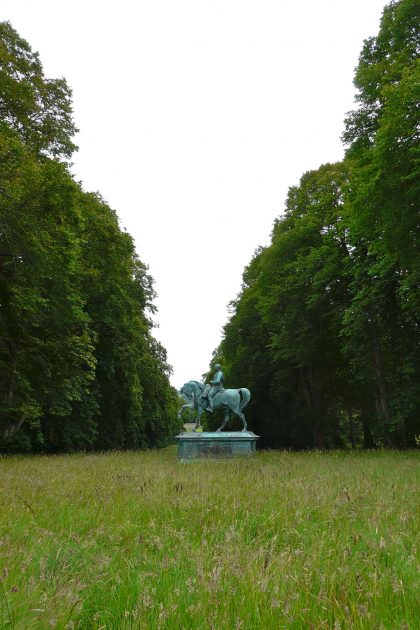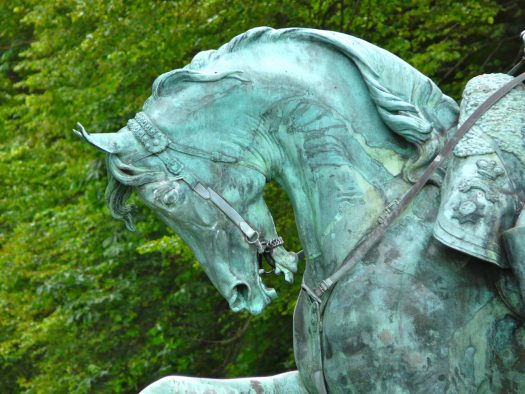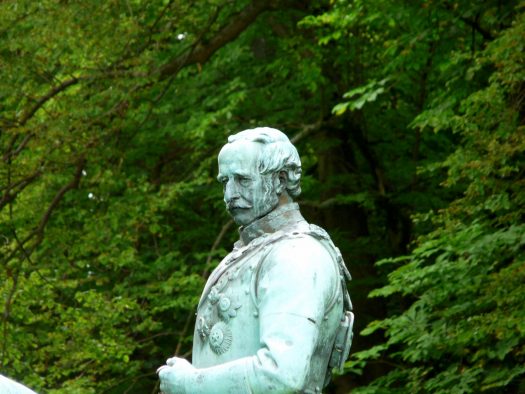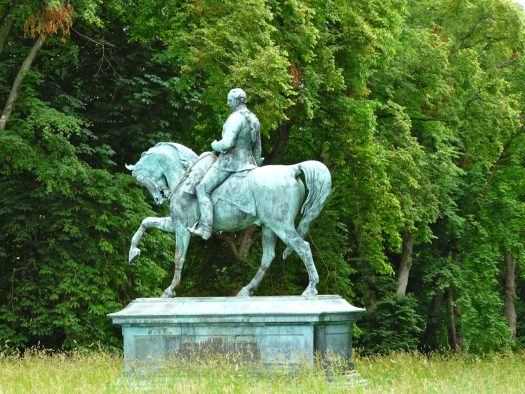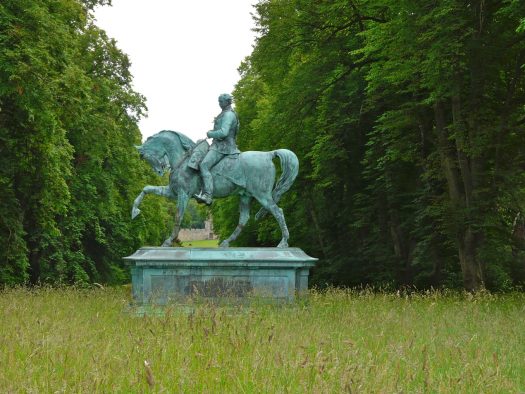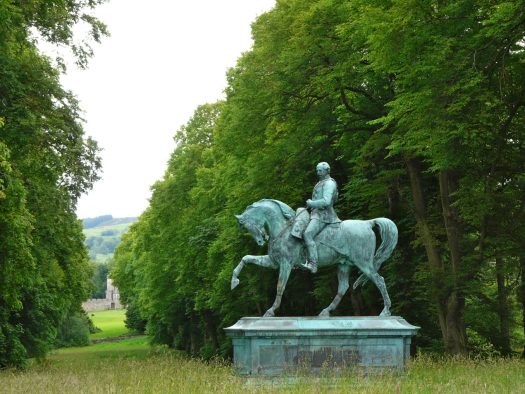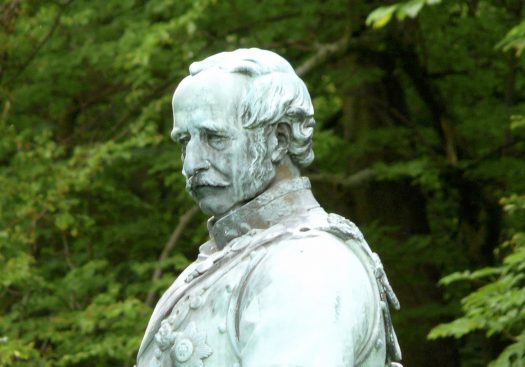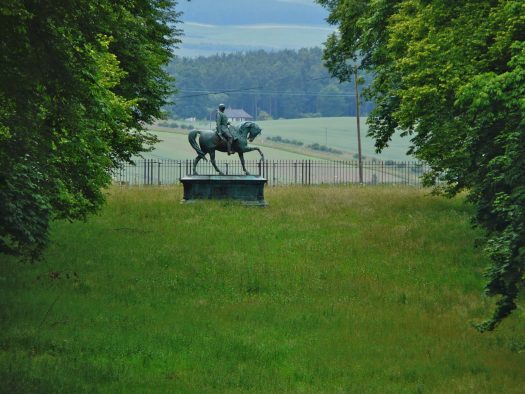This fine equestrian statue has a troubled history.
In 1869, at the time of his death, Gough’s friends felt that since he had been born in County Limerick, a statue on a prominent site in Dublin was appropriate. However, the Dublin City Council was reluctant to commemorate a servant of the empire who had gained the nickname ‘the Hammer of the Sikhs’, and vetoed each of their suggestions. Nevertheless, a commission for a commemorative statue was given to the Irish-born John Henry Foley, who died in 1874 before the work had been completed. His pupil, Thomas Brock, completed it. A shortage of funds meant that the horse had to be made from a cast that Foley had used for another work, his renowned statue of Viscount Hardinge.
Once finished, the statue’s problems continued. A site was found in Phoenix Park, Dublin, but once in place, the statue was physically attacked on a number of occasions because it was seen as a glorification of the British Empire. On Christmas Eve 1944, the rider was beheaded and his sword removed. In 1956, the right hind leg of the horse was blown off and then finally in 1957, the whole statue was hurled from its base by a huge blast; the work of experts in plastic explosives. For the subsequent 29 years the pedestal remained in place in Phoenix Park, while the statue itself was put into storage at the Royal Hospital in Kilmainham. Photographs exist of Gough’s severed head from the piece sitting in a cupboard. Eventually, in 1986 the statue was sold to Robert Guinness of Straffan, County Kildare for a sum believed to be £1000 or less, on the condition – according to the Irish Times – that it left Ireland. In 1988, it came into the possession of its present owner, a distant relative of Gough, who had it painstakingly restored and re-erected at his newly acquired home, Chillingham Castle, in 1990. The statue is now once again complete.


